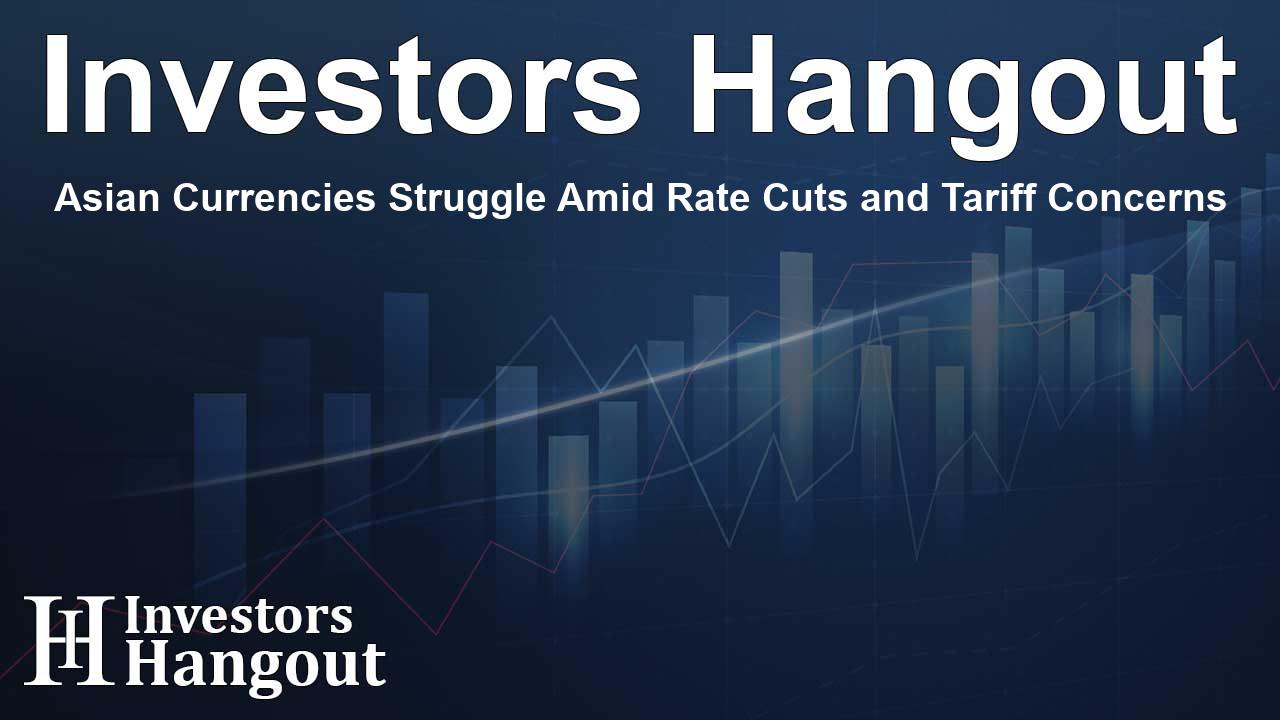Asian Currencies Struggle Amid Rate Cuts and Tariff Concerns

Asian Currency Dynamics Under Pressure
Recent reports reveal that bearish sentiment surrounding most Asian currencies has surged, reaching multi-month peaks. This shift is attributed to the ongoing expectations of reduced U.S. interest rate cuts this year, which has intensified demand for the dollar. In conjunction, looming tariff threats from the United States are putting additional pressure on riskier Asian assets, as highlighted by a recent poll.
Impact on the Chinese Yuan
The Chinese yuan is facing significant bearish bets, reaching levels not seen since mid-2023. With the yuan trading close to 16-year lows against the dollar, analysts see it as particularly vulnerable to both a stronger dollar and the potential for elevated tariffs stemming from U.S. policies under the new administration.
Regional Implications of Currency Weakness
As China's economic influence extends deeply into Southeast Asia, a depreciation of the yuan could ripple through regional markets, impacting not just currency values but also trade relationships. Investors are becoming cautious about the implications of a weaker yuan on the broader Southeast Asian economy, particularly as trade dynamics shift.
Market Reactions to U.S. Economic Policies
With the inauguration of the new administration approaching, there is a distinct shift away from Asian assets in the markets. Policies anticipated from the new leadership, including tax reforms and tariff adjustments, are expected to heighten inflationary pressures in the U.S., inevitably affecting local currencies as well.
The Fate of Asian Currencies Amid Rate Projections
The Federal Reserve's adjusted forecast, estimating only one 25 basis point rate cut in 2025, compared to two previously, has led markets to reassess their strategies. This alteration suggests that higher U.S. interest rates could drive capital outflows from emerging Asian markets and contribute to depreciation trends in their currencies.
Central Bank Challenges and Market Sentiment
DBS analysts indicated that the external financial climate limits how effectively central banks in Asia can respond to domestic economic challenges. Since the Federal Reserve initialized its rate cut cycle, Asian currencies have been on a downward trajectory, raising concerns about future economic stability.
Reflection on the Taiwan Dollar
As for the Taiwan dollar, short positions have reached their peak since May of the previous year, reflecting a growing trend towards currency pessimism in the region. The Indian rupee's recent decline, noted for its ninth consecutive weekly drop, also signals significant trader concerns, leading to a recent surge in bearish positions.
Singapore Dollar Outlook
Notably, short positions in the Singapore dollar have also hit a high since late 2022. While Singapore may appear insulated from some risk via direct U.S. tariff impacts, the indirect effects—from global economic slowdown and declines in Chinese exports—remain a substantial concern.
Financial Overview of the South Korean Won
The South Korean won has garnered attention as the most shorted Asian currency in the latest discussions. After logging its steepest annual decrease in over 16 years, the currency's struggles are compounded by a noted decline in exports and political uncertainties that overshadow market optimism.
Positioning Polls and Their Implications
The ongoing Asian currency positioning poll offers insights into how financial managers and analysts perceive the current market landscape for several key currencies, including the yuan, won, and rupee, among others. The poll employs a scoring system to illustrate market positions, indicating whether traders lean towards holding U.S. dollars over various Asian currencies.
Frequently Asked Questions
What factors are contributing to bearish sentiment in Asian currencies?
The sentiment is largely driven by expectations of fewer U.S. interest rate cuts and potential U.S. tariff threats impacting economic stability in Asia.
How is the Chinese yuan faring in current markets?
The yuan has reached significant bearish positions, particularly vulnerable due to its low trading value against the dollar and impending tariff threats.
What does the recent Federal Reserve projection imply for Asian currencies?
The Fed's outlook suggests limited rate cuts, which could lead to higher interest rates in the U.S., ultimately driving capital away from emerging Asian markets.
Why are traders concerned about the South Korean won?
The won has experienced the most substantial shorting due to political instability and a notable drop in exports, leading to uncertainty about its recovery.
What impacts do tariffs have on Singapore's economy?
While Singapore might not face direct tariff impacts, it is still at risk due to indirect consequences from slower global growth and reduced Chinese exports.
About Investors Hangout
Investors Hangout is a leading online stock forum for financial discussion and learning, offering a wide range of free tools and resources. It draws in traders of all levels, who exchange market knowledge, investigate trading tactics, and keep an eye on industry developments in real time. Featuring financial articles, stock message boards, quotes, charts, company profiles, and live news updates. Through cooperative learning and a wealth of informational resources, it helps users from novices creating their first portfolios to experts honing their techniques. Join Investors Hangout today: https://investorshangout.com/
Disclaimer: The content of this article is solely for general informational purposes only; it does not represent legal, financial, or investment advice. Investors Hangout does not offer financial advice; the author is not a licensed financial advisor. Consult a qualified advisor before making any financial or investment decisions based on this article. The author's interpretation of publicly available data shapes the opinions presented here; as a result, they should not be taken as advice to purchase, sell, or hold any securities mentioned or any other investments. The author does not guarantee the accuracy, completeness, or timeliness of any material, providing it "as is." Information and market conditions may change; past performance is not indicative of future outcomes. If any of the material offered here is inaccurate, please contact us for corrections.